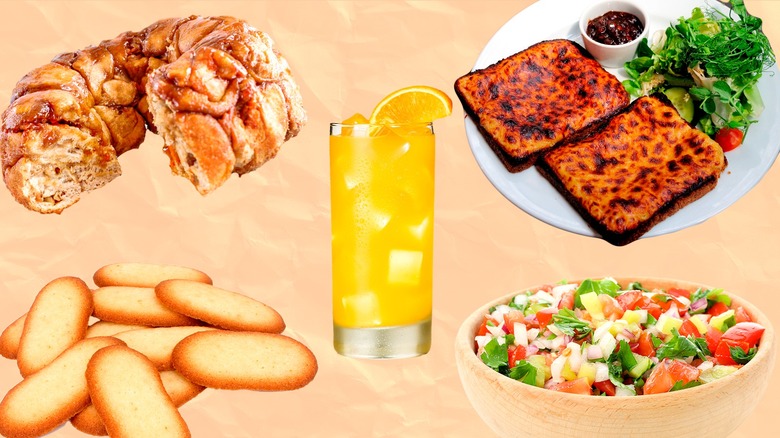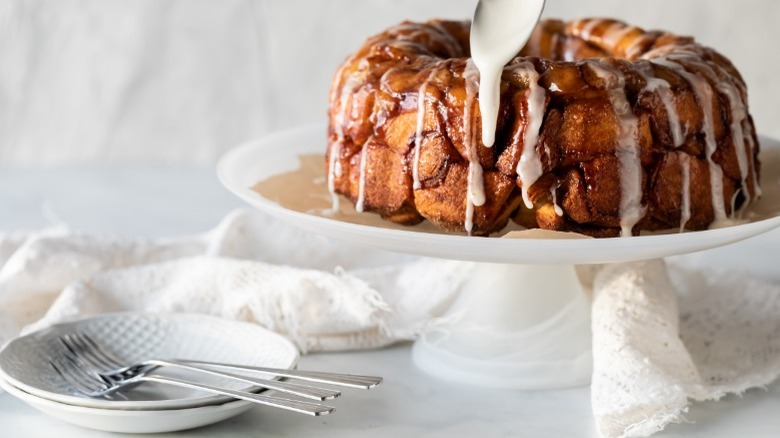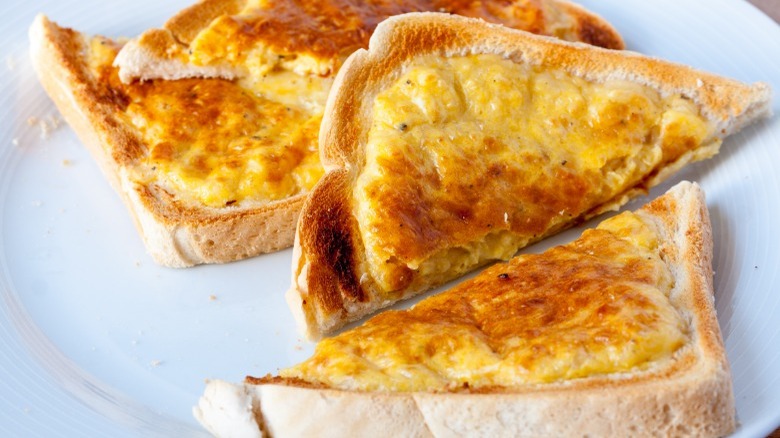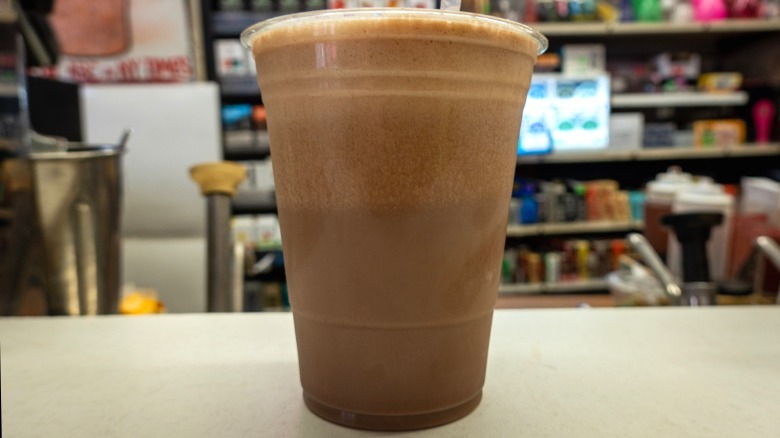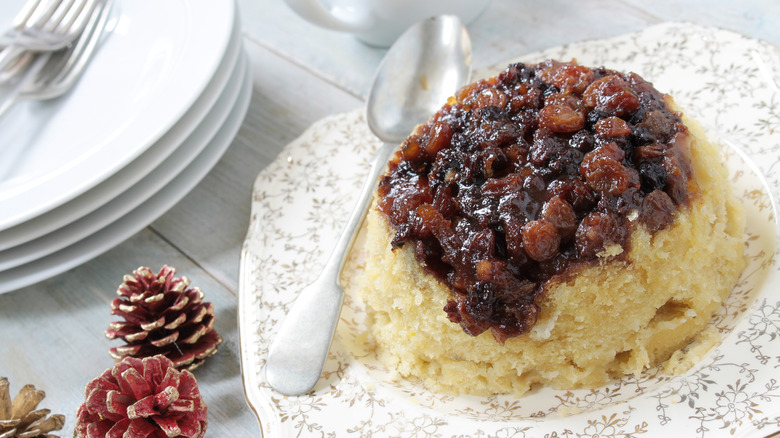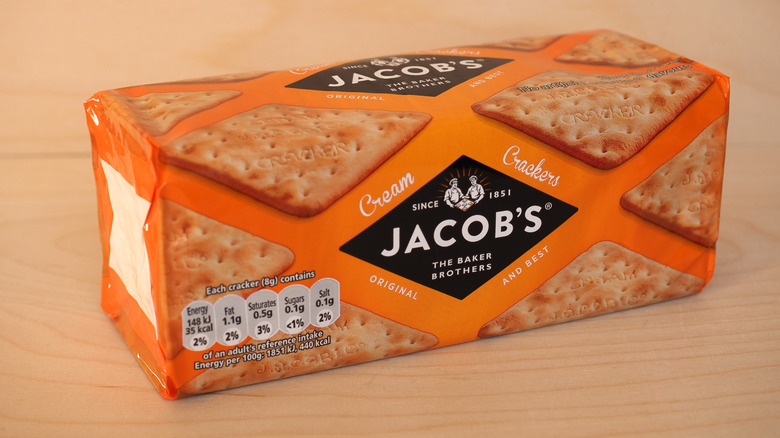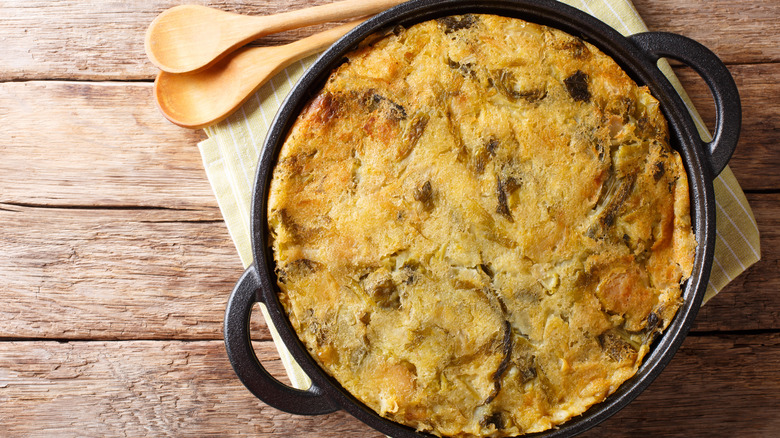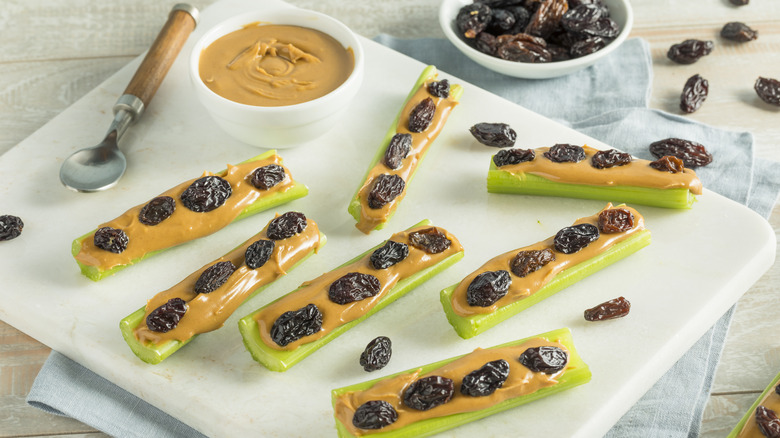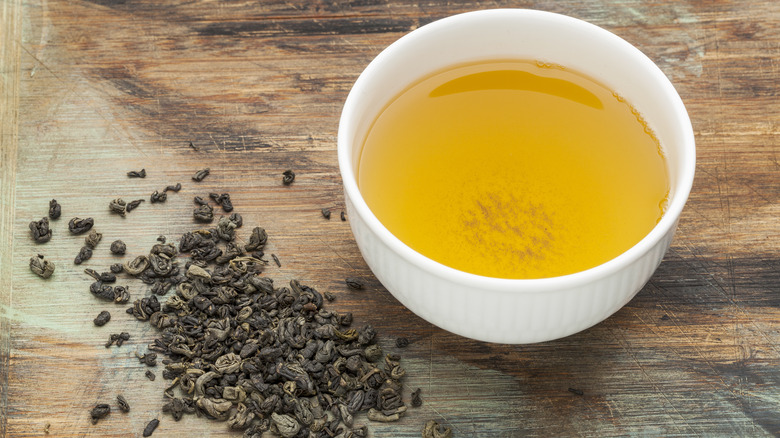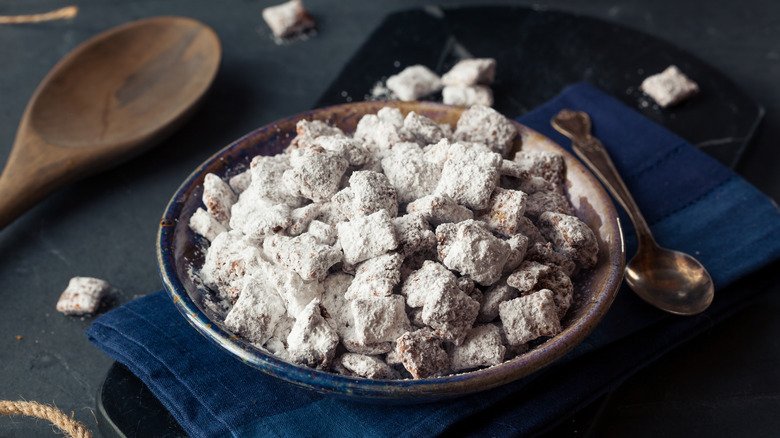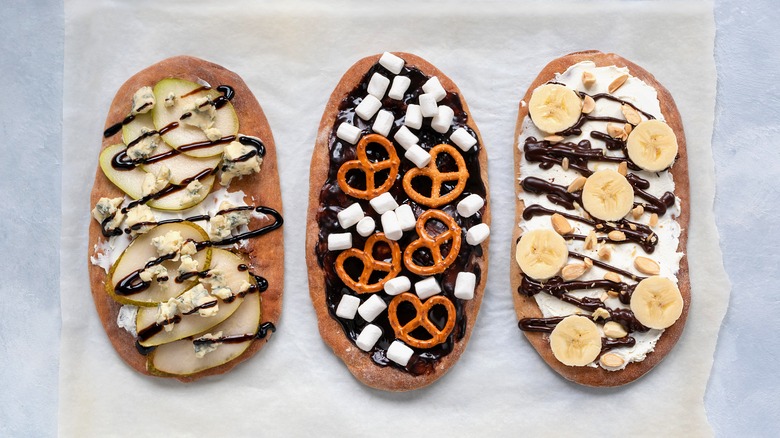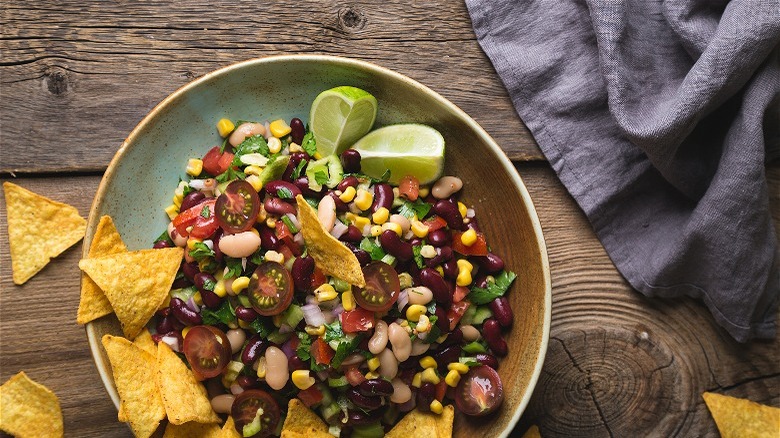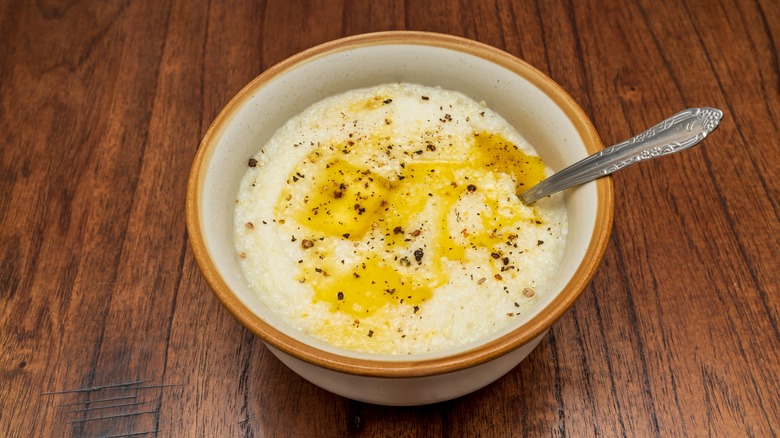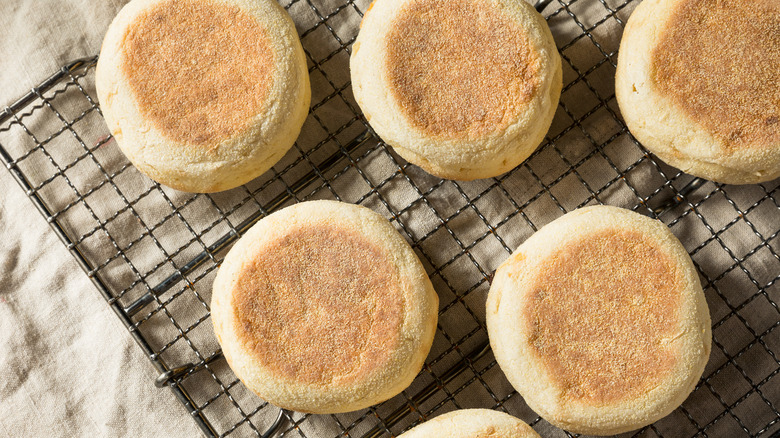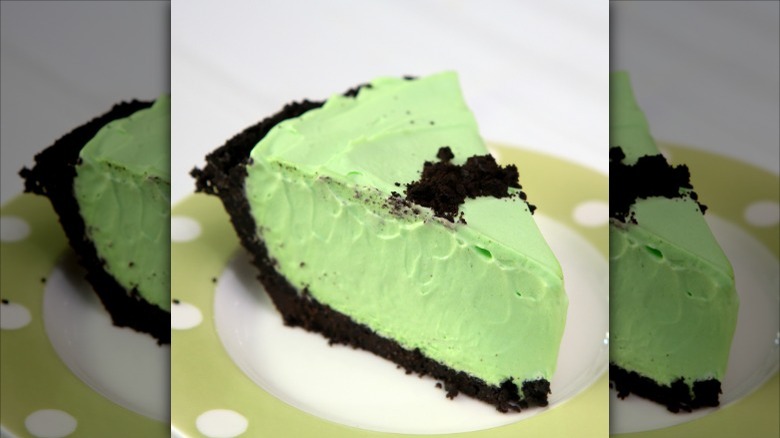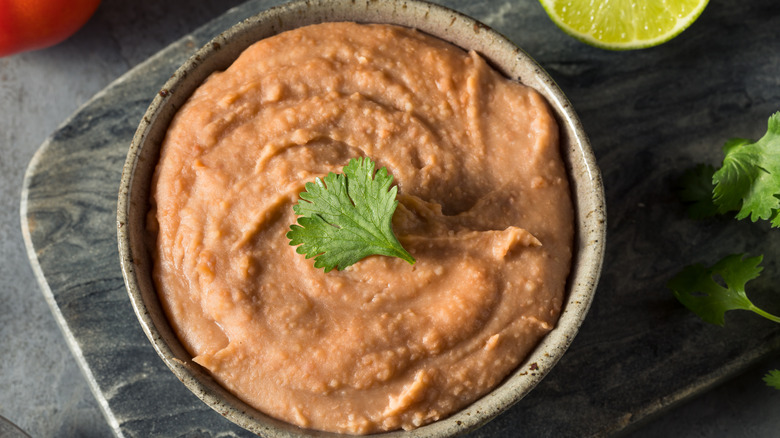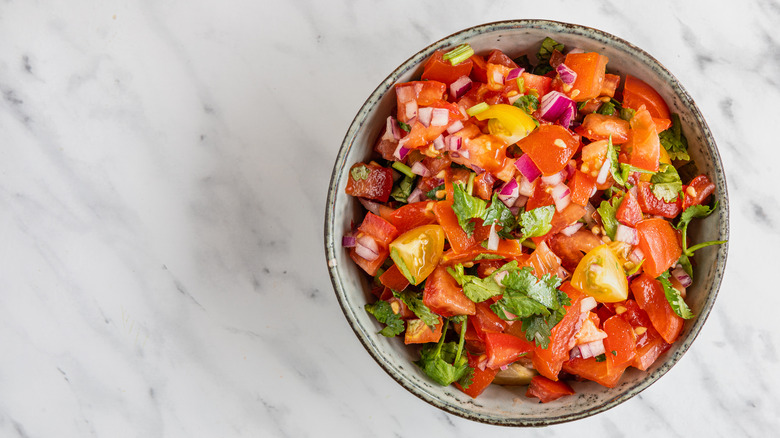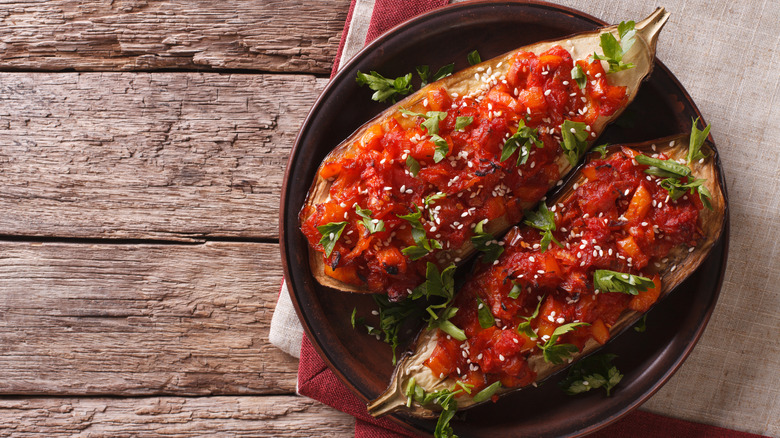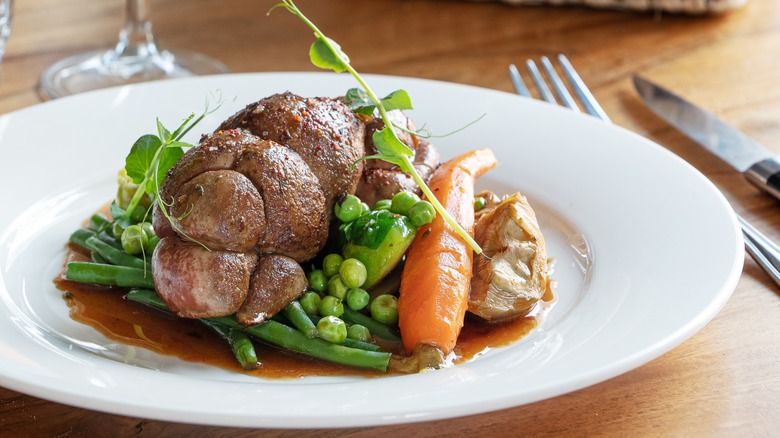25 Foods And Drinks With Deceptive Names
When it comes to food, names can be deceiving — especially when they sound sweet and innocent but are far from it. From dishes that don't contain any meat despite their name suggesting otherwise to snacks that have nothing to do with their supposed main ingredient, food names can be downright puzzling. But behind each name, there's often a curious legend or historical fact that sheds light on its true origins.
Some foods are named after their appearance, such as bear claws, beaver tails, and ants on a log, while the names of others suggest a place of origin that isn't, in fact, what it is (we're looking at you, Boston Cooler). Then there are foods that imply a certain principal ingredient, such as sweetbreads and mincemeat or Welsh rabbit and cream crackers, but their ingredient list is far from what the name suggests. These are just a few examples of deceptively named foods that might surprise you with their origin stories and etymology, so get ready to be reminded that we shouldn't always judge a dish by its name.
Monkey bread
Aliases for this oddly named treat include pinch-me cake, bubble loaf, and sticky bread, giving away its essence. And how would monkeys eat a cake? That's right, with their hands. Monkey bread, a staple of American baking since the 1980s after Nancy Reagan served it at a White House holiday event, is made by taking small pieces of yeast dough, coating them in sugar and cinnamon, and baking them in a bundt or other round cake pan with butter.
Some trace the recipe back to Hungarian immigrants, who brought over a similar dish called aranygaluska, and it was indeed called Hungarian Coffee Cake in the Betty Crocker recipe collection in the 1970s.
Welsh rabbit
While it is indeed Welsh, there's no rabbit in sight in this cheesy toastie. More commonly known as Welsh rarebit, the dish is made by covering toasted bread with a thick savory sauce made from cheese, beer, Worcestershire sauce, and seasonings.
The original English name, which first appeared in writing in 1725, is possibly a reference to the fact that cheese had to be a meat replacement for the peasants who couldn't afford it. However, its ancestor, a Welsh dish of bread and fire-roasted cheese called caws pobi, translates to toasted cheese. So does it make the original Welsh rarebit vegetarian? We think so.
Fuzzy navel
What do you get when you mix peach liqueur and orange juice? A delicious drink with an unappetizing name and curious history. Fuzzy Navel, an '80s hit that's still Iowa's favorite cocktail, is a fruity concoction that gained traction due to baby boomers' consumer habits changing toward sweet, low-alcoholic drinks.
Their desires were met by Earl LaRoe, a flavor scientist, who developed the world's first peach schnapps, which was then used in a simple two-ingredient cocktail crafted by New Jersey bartender Ray Foley, author of "Bartending for Dummies." Therefore, the name is likely a playful reference to the ingredient list: "fuzzy" for the peach schnapps and "navel" for the orange juice.
Egg cream
Unlike the early versions of the 19th and early 20th-century egg cream, the one immortalized in the eponymous Lou Reed song has no eggs or cream. This iconic mix of chocolate syrup, milk, and seltzer has a peculiar history. It is believed to have originated at the turn of the 20th century when soda fountains were popular gathering places in New York City.
As for the name "egg cream," there are a few theories. One theory is that the term comes from corrupting the Yiddish word "echt," which means "genuine." Another version links the name to the drink's frothy texture, reminiscent of a drink made with eggs and cream.
Cat's tongue
Without knowing what they look like, you'll probably never guess what cat's tongues actually are. However, dear cat lovers, there's no need to worry: These sweet treats have more in common with ladyfingers than with felines. Traditionally, these thin, crisp cookies are made with butter, sugar, egg whites, and flour and have a more delicate, meringue-like texture compared to their savoiardi lookalikes.
A number of cultures have their own variations, but the two primary ones are French langues de chat and Italian lingue di gatto (both translate to "cat's tongue"). The shape of the cookie, which is long and flat with pointed ends, resembles a cat's tongue, which likely inspired the name.
Boston Cooler
Have you heard of a drink created so far from Boston that its fame didn't even reach the city it wasn't named after? If not, let us introduce you to the Boston Cooler, one of the classic Detroit foods comprised of vanilla ice cream and Detroit's own Vernor's Ginger Ale.
While some sources point to the original Massachusetts-born alcoholic drink of the same name as its predecessor, others believe it was invented in Michigan and named after Boston Boulevard, located near James Vernor's soda fountain. Either way, the smooth and creamy ginger soda shake became so popular it let all the other versions sink into oblivion.
Mincemeat
If you've ever wondered whether a traditional Christmas pie filling that goes by the name of mincemeat contains any actual meat, the answer is yes and no. Historically, mincemeat did indeed contain meat, such as goose or mutton (and lots of it), as well as suet, spices, brandy, and dried fruits. The pie was a practical way to preserve meat in sugar, often served as a savory dish rather than a sweet one.
Over time, the meat content in mincemeat decreased, and by the 20th century, most recipes no longer called for meat, only for mincing the fruit. However, the name "mincemeat" persisted, and today, most mincemeat pie recipes don't even require suet.
Cold duck
Unless you're a cocktail expert, it is likely that the name "cold duck" evoked some food associations, particularly an image of old Chinese takeout. However, the English name of this drink is believed to be a corrupted translation of the German "kalte ende," meaning "cold end," which somehow got transformed to "kalte ente," meaning "cold duck."
One legend goes that an 18th-century Saxon prince ordered to mix Burgundy with Champagne as a "cool end" to a meal. The modern, commercially bottled version is believed to have been created by Detroiter Harold Borgman in 1937, who followed the same logic as his German predecessors to great commercial success.
Cream crackers
This Irish snack was born out of Industrial-era demand for convenience foods. It became a teatime staple thanks to the efforts of Jacob's baking company, which introduced them in 1885. And even though the name suggests it has dairy, the ingredient list has always been vegan-friendly.
Ever since their inception in 19th-century Dublin, cream crackers contained little more than flour, baking soda, salt, yeast, and vegetable oil. The name is believed to be a nod to the manufacturing process, during which the flour and water mixture is creamed with the oil. Today, the Jacobs brothers' legacy lives on in these crispy, flaky crackers, typically enjoyed with sweet and savory toppings.
Bubble and squeak
A classic example of scrappy cooking, the original 18th-century bubble and squeak was made with Sunday dinner leftovers, such as boiled beef and cabbage. Moving forward, meat was gradually replaced with potatoes due to food scarcity in the times of World War II, making the modern version suitable for vegetarians.
Today, bubble and squeak often takes the form of crispy patties made from mashed potatoes and assorted vegetables. As to how this British food got its name, it is said to come from the sound the dish makes while cooking: The vegetables (particularly cabbage with its high water content) bubble and squeak as they are fried in a pan.
Ants on a log
Stuffing celery sticks started long before Ants on a Log became a snacktime mainstay. The mild flavor and natural indent of the stalks have made them a perfect vessel for various fillings. While early 20th-century cookbooks suggested filling them with butter, cheese, and other savory toppings, somewhere in the 1960s, peanut butter stuffing rose to prominence.
The origins of the raisin-topped snack and its name are virtually untraceable, and countless variations have spawned from the original, including raisinless "Ants on Vacation," as well as "ghost" and "fire" ants made from marshmallows and cranberries, respectively. Today, it qualifies as a "rat snack," which is a term for grabbing a spontaneous, quick, and messy bite.
Ladies' fingers, lady fingers, and ladyfingers
Are they a fruit? Are they a vegetable? Are they a type of pastry? They could be any of the above, depending on the spelling. As you can guess, all three bear a visual resemblance to their namesake subject.
Ladies' fingers is a colloquial name for okra, a green vegetable popular in South American cuisines. Lady Fingers is a type of banana known for its small size and dainty appearance. Finally, ladyfingers, or savoiardi, are a type of sponge cookie most often found in tiramisu. Their oblong form roughly traces the shape of human fingers.
Gunpowder tea
You'd think that a drink that goes by this name was born out of wartime necessity, and you'd be wrong. In fact, gunpowder tea is a type of green tea produced by plucking young tea leaves and subsequently withering, steaming, and rolling them into small pellets. The pellets are then dried, giving the tea a unique appearance and flavor.
Initially known as zhu cha or "pearl tea" in China, it is believed to have gotten its modern name after a 19th-century British clerk noticed the visual resemblance of the pellets to gunpowder grains. In line with their new name, the dried pellets unroll or "explode" when brewed.
Puppy chow
Also known as monkey munch, muddy buddies, reindeer chow, muddy munch, or doggy bag, this snack of many unappetizing names has one thing going for it: It's undeniably delicious. Despite its name (and the fact that it does kind of look like dried dog food), this Midwestern favorite does not contain any ingredients suitable for dogs and is not meant for canine consumption.
Instead, it's made with Chex cereal coated in peanut butter and chocolate and tossed with powdered sugar. A decadent twist on the classic, this puppy chow recipe is made with coconut flakes and caramel in addition to the original mix.
Beaver tail
Beaver tail is one of Canada's iconic foods, widely considered to be the Great White North's unique take on the donut. It is made by stretching and flattening a ball of dough, which is then deep-fried until it is crispy and golden brown. The pastry is typically served hot and topped with anything from cinnamon sugar and chocolate to lox, bacon, and cheese.
Despite its name, beaver tail pastries do not (and never have) contain any beaver meat or byproducts. The name is simply a nod to the animal that is a symbol of Canada and to the shape of the pastry itself.
Cowboy caviar
A recent TikTok trend that's actually been around for decades, cowboy caviar is much more down-to-earth and vegan-friendly than you'd expect. The name is meant to be ironic since cowboy caviar is a humble and affordable dish (unlike actual caviar) made from simple, readily available ingredients.
Originally known as Texas caviar, this protein-rich salsa is believed to have been invented in the 1940s by Helen Corbitt, a Dallasite Neiman Marcus culinary director. Her original recipe included local ingredients such as garlic, onions, and black-eyed peas dressed with oil and vinegar. These days, a typical cowboy caviar recipe includes corn, avocado, and red bell pepper in addition to the traditional ingredients.
Grits
Grits are a Southern staple dish made from ground cornmeal that is boiled with water or milk until it reaches a thick, porridge-like consistency. While variations of milled corn porridge have been around since antiquity, the origin of grits in their modern form is traced to the diets of 16th-century indigenous communities and, later, enslaved people of Southern plantations.
The dish has since evolved and became an essential part of Southern cultural identity, with preparation and serving style varying by region and family tradition. The Old English word "grytt," which was used to describe roughly milled grain, is believed to have evolved into the modern spelling. Since the 1980s, grits have gained popularity outside of the South and are now enjoyed across the country.
English muffins
As with any popular food, the origins of English muffins are murky. For one, the yeasty flatbreads have very little in common with their sweet American counterparts. A typical English muffin recipe includes water, flour, yeast, salt, a bit of sugar to jump-start the yeast, and a touch of oil for greasing, which makes them closer visually and nutritionally to crumpets, another British breakfast staple.
Although many sources credit Samuel Bath Thomas, a 19th-century British ex-pat, with the invention of English muffins on American soil, the truth might be a little more complicated. It seems that breads like these already existed in England, but it was Thomas who coined and patented the term, popularizing them in the U.S.
Grasshopper pie
Before you wince at the buggy name of this mid-century hit, consider its origins. This pie was at the height of its popularity in the 1960s, and even then, it didn't contain any insect parts. Instead, some believe it was named after the Southern grasshopper cocktail, its title a nod to its crème de menthe hue.
Judging by the pie's ingredient list, which typically involves a chocolate cookie crust and a filling made from crème de menthe and marshmallow cream, this most popular theory on how grasshopper pie gets its unusual name holds up the best. But if you'd rather take things literally, some modern grasshopper pie recipes do indeed contain insects.
Refried beans
How old were you when you learned that refried beans aren't actually fried twice? If you answered "today years old," let us illuminate you further. The term used to refer to this common dish in Mexican and Tex-Mex cuisines is based on an incorrect translation of the Spanish phrase "frijoles refritos." The accurate translation of this phrase is "well-fried beans."
To make refried beans, cooked beans (usually pinto beans) are mashed and fried with onion, garlic, and spices until creamy. The process of mashing and frying the beans is what gives them their thick, delicate texture and rich flavor, and it is the "well-frying" step that is referred to as "refrying."
Bear claw
America's answer to Canadian beaver tail, this dish also doesn't contain any meat. Bear claw is actually a sweet, flaky pastry typically filled with almond paste and topped with slivered almonds and a sweet glaze. The dough is shaped and cut in a way that makes it bear a resemblance to the ursid's limb, hence the name.
These decadent pastries have been around for at least a hundred years, with first mentions in U.S. newspapers dating back to 1915. They have since become a popular treat in many American bakeries and coffee shops, often paired with a cup of coffee for a sweet breakfast or snack.
Truffle oil
We hate to break it to you, but if you got it at a supermarket, chances are, your truffle oil contains no real truffles. Instead, most commercial brands are made with synthetic compounds, such as 2,4-dithiapentane, that mimic the aroma of truffles. The flavor created with these chemicals is strong and can overpower a dish if used liberally.
In some cases, the oil is also infused with actual truffle pieces or essence, but these are often less common and more expensive, but even so, truffle oil still can never truly replicate the complex and nuanced flavor of the fungus it's named after.
Rooster's beak
You're likely familiar with this dish's original name: pico de gallo. A far more animal-friendly salsa than the name might suggest, pico de gallo contains no rooster parts. Instead, it may have gotten its name from the way it was once eaten — directly with hands, pinching bits and pieces between the thumb and index finger, forcing the hand to take a shape resembling a rooster's head.
This wouldn't be possible with any old salsa — what makes pico de gallo stand out is its chunky texture. So next time you chop up some tomatoes, jalapeño peppers, onions, and cilantro, try eating them with your hands to see if this theory holds up.
The priest fainted
"The priest fainted," or, to be more precise, "the imam fainted," is the English translation of İmam Bayıldı, a popular plant-based dish in Ottoman cuisine. It consists of eggplants stuffed with a mixture of onions, tomatoes, garlic, and spices and then baked in olive oil.
While there are several legendary stories surrounding its origins, the most common one is that the dish received its unusual name because it was so delicious that a priest (or imam in Turkish) would faint upon tasting it. Today, it is often served as an appetizer or side dish and is a staple of Turkish home cooking and restaurants.
Sweetbreads
Unless you're a Julia Child fan or an expert in French cuisine, you'll probably never guess what sweetbreads actually are. Despite what their innocent name suggests, "sweetbreads" is not another term for danishes or Hawaiian rolls. Instead, it is a kind of varietal or organ meat (specifically, the thymus gland or pancreas of a calf) that even some meat-eaters won't dare to try.
The origin of the name "sweetbread" may date back to the 16th century, when the Old English word "bræd" was used to refer to animal flesh, whereas the "sweet" part likely described the mild flavor of this ingredient.
